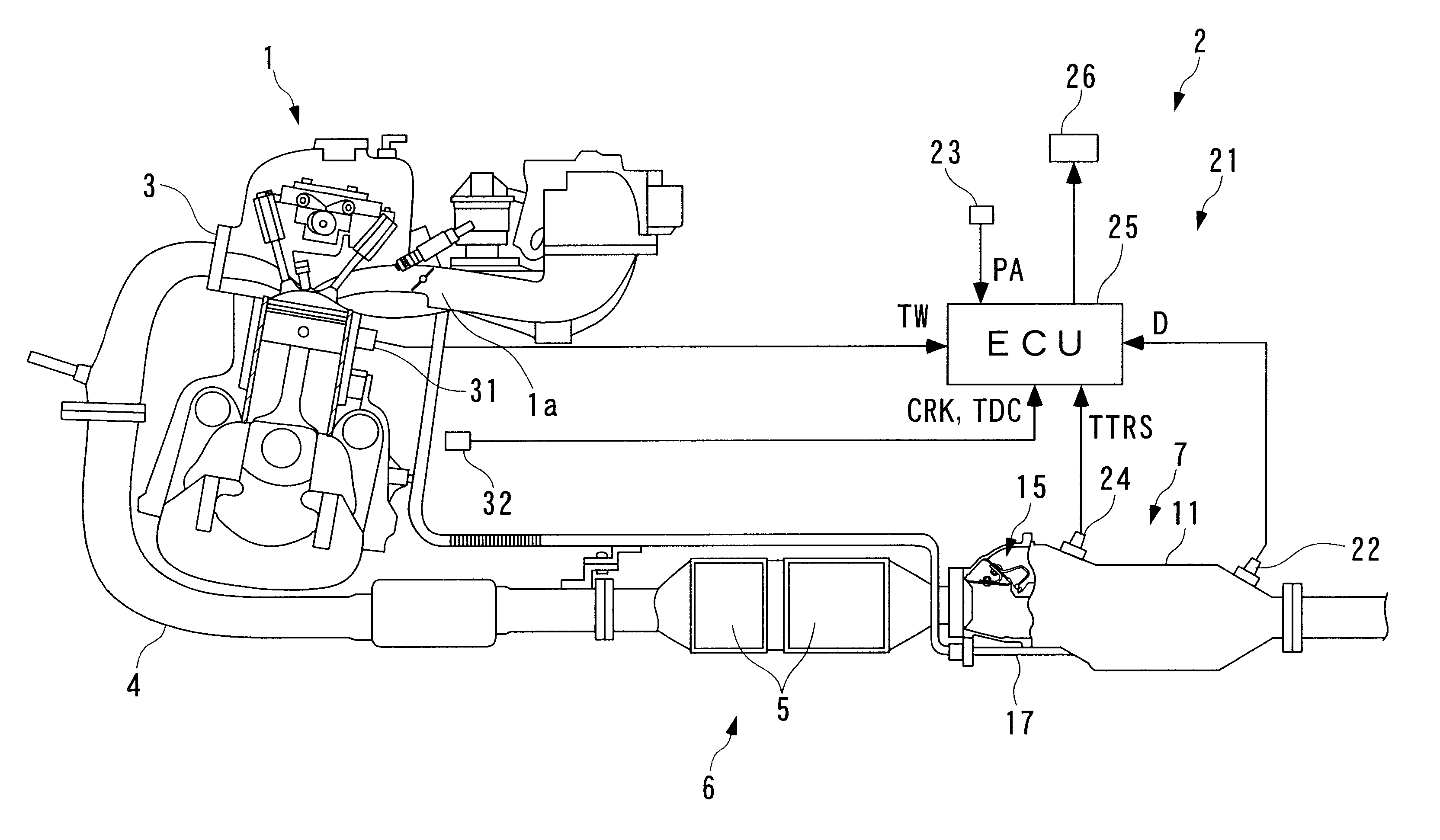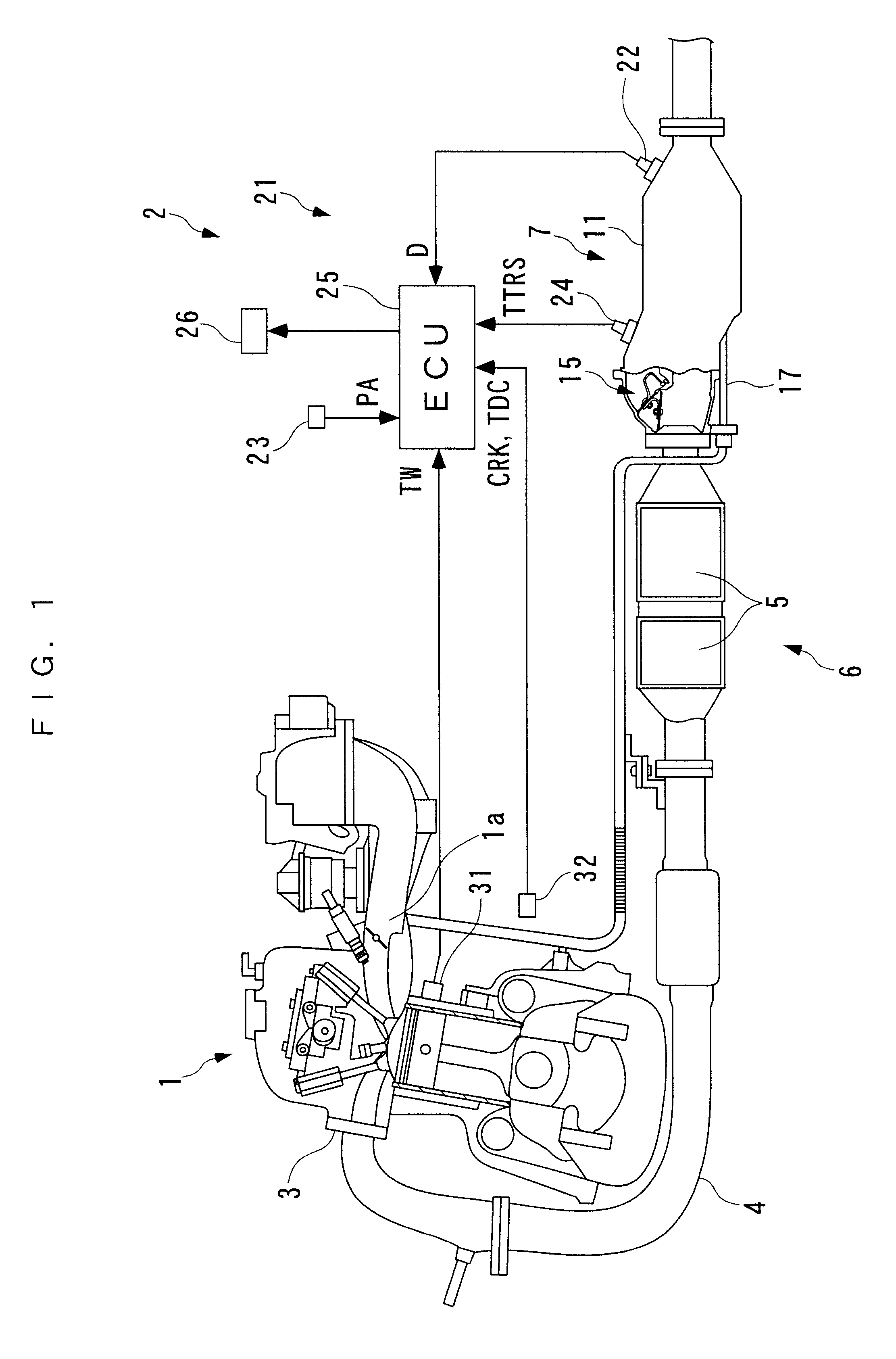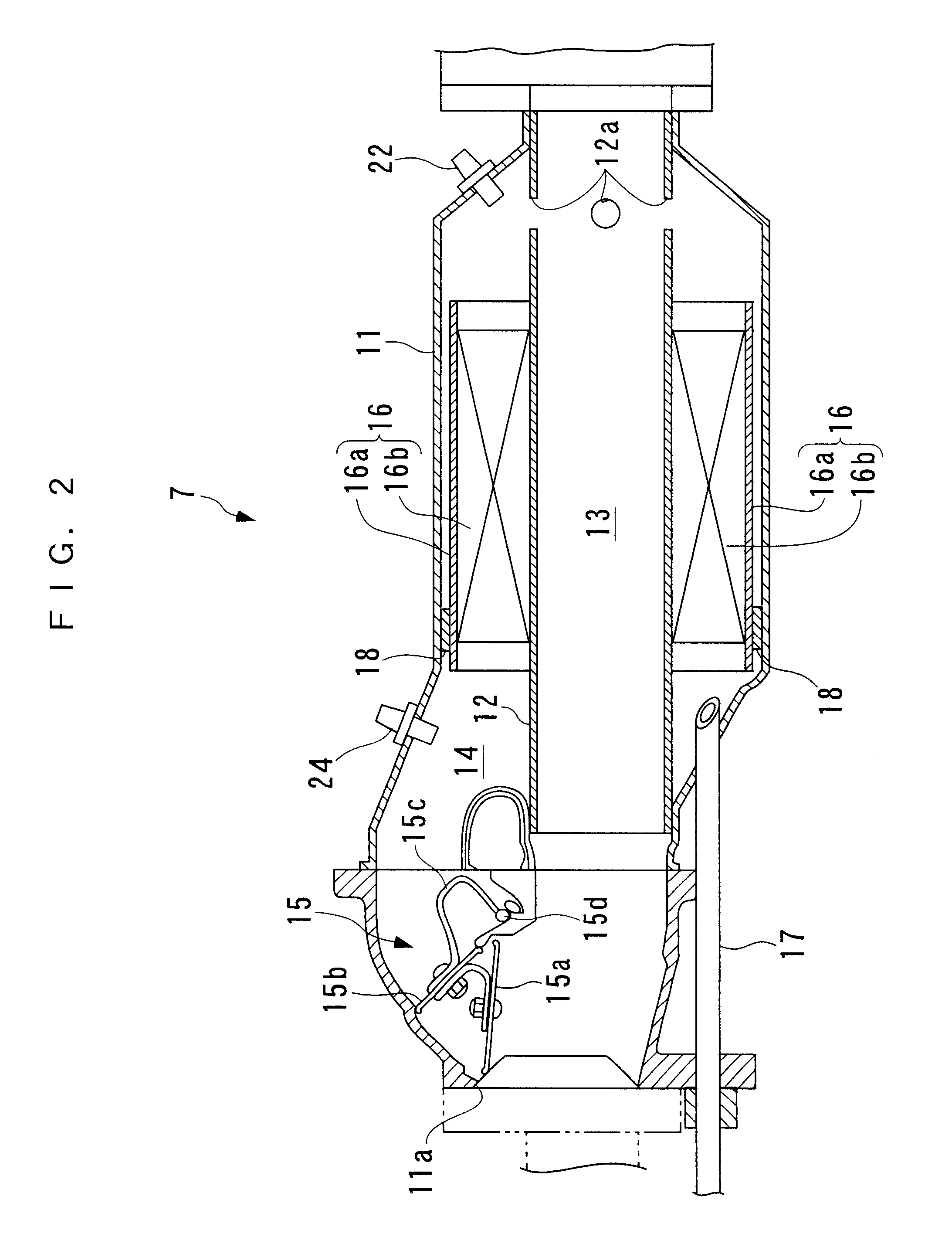Catalyst state detector for exhaust gas purifying catalyst
a technology of purifying catalyst and catalyst state, which is applied in the direction of exhaust treatment electric control, separation process, instruments, etc., can solve the problems of deterioration of adsorbent capacity, deterioration of adsorbent pores, and gradual deterioration of adsorbent ability, etc., and achieves accurate detection of a state and is manufactured at a low price
- Summary
- Abstract
- Description
- Claims
- Application Information
AI Technical Summary
Benefits of technology
Problems solved by technology
Method used
Image
Examples
first embodiment
In the following, preferred embodiments of the present invention will be described in detail with reference to the accompanying drawings. FIG. 1 illustrates an internal combustion engine in which a catalyst state detector for an exhaust gas purifying catalyst according to the present invention is applied as an adsorbent deterioration detector. This internal combustion engine 1 (hereinafter simply referred to as the "engine") includes an exhaust system 2 which is configured to emit exhaust gases emitted from the engine 1 to the outside (atmosphere) while purifying the same, and recirculate a portion of the exhaust gases to the engine 1 (EGR). The exhaust system 2 has an exhaust pipe 4 connected to the engine 1 through an exhaust manifold 3.
The exhaust system 2 is also provided, at intermediate locations of the exhaust pipe 4, with an catalyzer 6 having two three-way catalysts 5 as an exhaust gas purifying catalyst for purifying exhaust gases, and a hydrocarbon adsorbent catalyzer 7 f...
second embodiment
As described above in detail, by detecting the downstream humidity which has a high correlation to an actual adsorbed state of hydrocarbons in the HC adsorbent 16, it is possible to accurately detect an adsorbed state and a desorbed state of hydrocarbons in the HC adsorbent 16. Also, by compensating the humidity sensor 22 for a response delay, it is possible to correctly detect the state of the HC adsorbent 16 even with the humidity sensor 22 which exhibits a low responsibility, while properly compensating such the humidity sensor 22 for the response delay. Further, by heating the sensor element 22a of the humidity sensor 22 by the heater 28 in accordance with an operating state of the engine 1, it is possible to bring the sensor element 22a into a state suitable for detecting the humidity. As a result, the humidity can be correctly detected while avoiding inconveniences, for example, dew condensation on the sensor element 22a, coke deposition on the sensor element 22a, and so on.
I...
PUM
| Property | Measurement | Unit |
|---|---|---|
| temperature | aaaaa | aaaaa |
| temperature | aaaaa | aaaaa |
| temperature | aaaaa | aaaaa |
Abstract
Description
Claims
Application Information
 Login to View More
Login to View More - R&D
- Intellectual Property
- Life Sciences
- Materials
- Tech Scout
- Unparalleled Data Quality
- Higher Quality Content
- 60% Fewer Hallucinations
Browse by: Latest US Patents, China's latest patents, Technical Efficacy Thesaurus, Application Domain, Technology Topic, Popular Technical Reports.
© 2025 PatSnap. All rights reserved.Legal|Privacy policy|Modern Slavery Act Transparency Statement|Sitemap|About US| Contact US: help@patsnap.com



